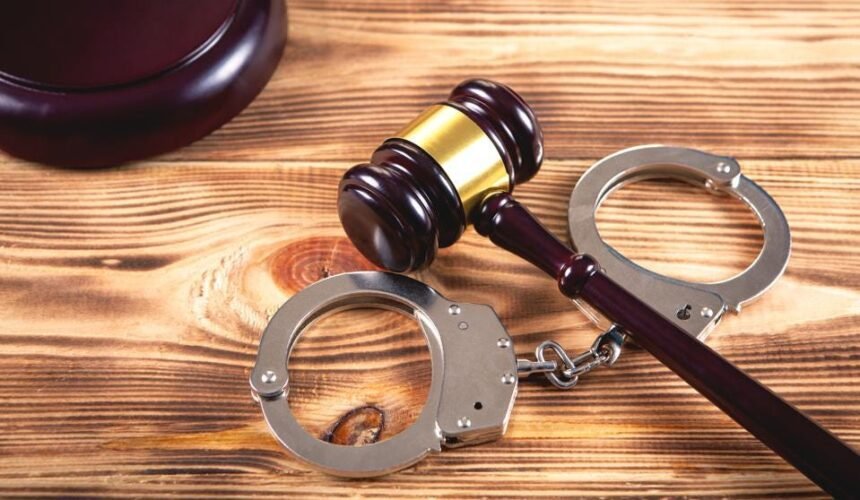The Criminal Justice System plays a crucial role in ensuring justice, fairness, and accountability in society. Whether you’ve watched courtroom dramas or heard about criminal cases in the news, it’s easy to get curious about how this system works. In this article, we’ll take a closer look at the Criminal Justice System, its key components, how it functions, and why it’s so essential to maintaining peace and order in our communities.
What is the Criminal Justice System?
At its core, the Criminal Justice System is a network of government institutions and processes designed to identify, arrest, prosecute, and punish individuals who break the law. It aims to uphold laws, protect citizens, and make sure that those who commit crimes are held accountable for their actions.
The Criminal Justice System includes three main components:
- Law Enforcement (Police and Agencies)
- Judiciary (Courts and Judges)
- Corrections (Jails, Prisons, and Probation)
Each of these branches plays an essential role in maintaining balance and fairness in society. The goal of the system is not only to punish criminals but also to provide justice to victims and ensure everyone is treated fairly under the law.
Key Components of the Criminal Justice System
The Criminal Justice System is like a well-organized machine where each part needs to work together for it to function effectively. Let’s break it down into its key components:
1. Law Enforcement: Keeping the Peace
Law enforcement is the first line of defense in the Criminal Justice System. The police and other agencies are responsible for enforcing the laws and investigating crimes. They ensure the safety of citizens by preventing crimes and apprehending criminals.
- Police Officers: Police are the most well-known part of law enforcement. They patrol neighborhoods, respond to emergencies, investigate crimes, and make arrests.
- Federal Agencies: In addition to local police, there are federal agencies like the FBI and DEA, which handle more serious or wide-reaching crimes.
Key Responsibilities:
- Enforcing laws
- Investigating crimes
- Making arrests
2. Judiciary: Ensuring Fair Trials
Once someone is arrested, the case moves to the judiciary—this is where the court system steps in. The judiciary ensures that individuals receive a fair trial where they are judged by their peers or a judge. The goal is to make sure that the Criminal Justice System is just and that innocent people are not wrongfully punished.
- Judges: Judges play a key role in overseeing trials, making sure laws are followed, and determining appropriate sentences for criminals.
- Prosecutors and Defense Attorneys: Prosecutors represent the government and bring criminal cases against individuals, while defense attorneys protect the rights of the accused.
- Jury: In serious criminal cases, a jury of peers may be called upon to determine the guilt or innocence of the accused.
Key Responsibilities:
- Conducting trials
- Deciding guilt or innocence
- Determining sentences
3. Corrections: Punishment and Rehabilitation
Once a person is convicted, they are sentenced to a period of punishment, often served in prison or jail. The corrections system is responsible for overseeing these individuals and ensuring they either serve their time or are rehabilitated.
- Jails and Prisons: For short-term or long-term sentences, individuals are placed in jails or prisons. Jails are typically for less serious crimes, while prisons house individuals convicted of more severe offenses.
- Probation: In some cases, instead of jail time, offenders may be placed on probation, allowing them to serve their sentence while staying in the community under supervision.
Key Responsibilities:
- Punishment
- Rehabilitation
- Reentry programs
The Role of the Criminal Justice System in Society
The Criminal Justice System serves a variety of important functions in society. It not only punishes those who commit crimes but also seeks to deter others from committing similar acts. Furthermore, it works to protect the rights of victims and prevent crimes from happening in the future.
Maintaining Order
One of the primary functions of the Criminal Justice System is to maintain social order. By enforcing laws, arresting criminals, and delivering punishments, the system helps ensure people can live their lives in peace without fear of crime.
Providing Fairness and Equality
The Criminal Justice System aims to be impartial. It strives to provide equal treatment to everyone, regardless of their background, race, or socio-economic status. This means ensuring that the rights of both victims and suspects are respected during the legal process. Everyone deserves a fair trial, and the system exists to ensure that justice is served.
Protecting Victims’ Rights
While the Criminal Justice System seeks to punish offenders, it also focuses on protecting the rights of victims. The system ensures victims of crimes are heard, that they receive support, and that their trauma is acknowledged during legal proceedings. Victims may be involved in trials and sentencing to make sure their voice is heard.
The Process: From Arrest to Trial
So, how does the Criminal Justice System work in practice? Let’s take a step-by-step look at what happens after a crime is committed.
Step 1: Arrest and Investigation
When a crime occurs, law enforcement agencies investigate the crime. If they have enough evidence, they make an arrest. An individual can be arrested for a crime they are suspected of committing.
- Evidence collection
- Witness interviews
- Arrest of suspects
Step 2: The Charging Process
Once an arrest is made, the prosecutor decides whether there is enough evidence to press charges. If charges are filed, the case moves to court for trial.
- Decision on charges
- Prosecutor files the case
Step 3: Trial and Court Proceedings
During the trial, both the prosecutor and defense attorney present their evidence and arguments. The judge or jury then decides whether the defendant is guilty or innocent. If the defendant is found guilty, the judge determines the sentence.
- Presentation of evidence
- Defense and prosecution arguments
- Verdict and sentencing
Step 4: Corrections and Punishment
After a conviction, the individual may be sentenced to prison or jail time. They might also be given probation or other penalties depending on the crime.
- Prison time
- Probation
- Rehabilitation programs
The Importance of the Criminal Justice System
The Criminal Justice System is essential for a fair and peaceful society. Without it, people would not feel safe knowing that criminals could act without consequences. Moreover, it helps uphold the rights of individuals, protects victims, and ensures that justice is served.
Upholding the Law
Without a strong Criminal Justice System, there would be no clear laws to follow or consequences for those who break them. The system ensures that society can function smoothly, knowing that crimes will be dealt with.
Preventing Crime
The Criminal Justice System helps deter crimes through the punishment of criminals. The idea is to show potential offenders that crime doesn’t pay and that there are serious consequences to breaking the law.
Rehabilitation
While punishment is a significant aspect of the Criminal Justice System, rehabilitation is equally important. The system helps offenders understand the impact of their actions and allows them to reform. Through various programs, individuals may be reintegrated into society as productive citizens.
Conclusion: The Ever-Evolving Criminal Justice System
The Criminal Justice System is essential in maintaining order, fairness, and accountability in society. It helps prevent crime, ensures justice, and protects the rights of both victims and the accused. While the system isn’t perfect, it continues to evolve to meet the needs of society. By ensuring fairness, upholding laws, and offering rehabilitation, the Criminal Justice System plays a vital role in building a better future for everyone.






